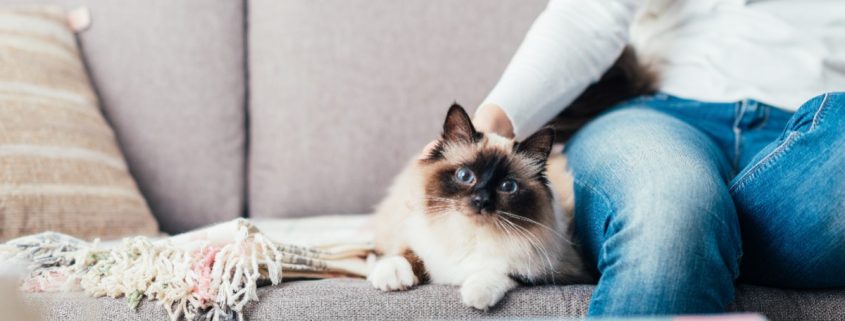Cats clawing on furniture and other household furnishings may be purely destructive behavior from your point of view, but not from your cat’s point of view. To them, it’s natural behavior, following a need to keep their claws in top shape, communicate territory boundaries, and provide a form of exercise. Because scratching is a natural activity for cats, protecting your furniture and other household goods may take a little ingenuity and effort on your behalf but is not impossible.
Understand Your Cat’s Behavior
Once you know why your kitty is scratching up your furniture, you can formulate a plan to protect your home. So, here’s a little more insight into why cats scratch.
- Grooming and nail health: Scratching helps cats and kittens sharpen their claws and shed dead skin. If your cat is scratching a lot, you may need to trim their nails or get a new scratching post.
- Communication: As much as you wish your furry friend could simply open their mouth and tell you how they feel, they can’t. This is why cats use scratching as a method of communication. Sometimes, your cat will scratch if they’re excited, stressed, or just feeling good. They could also want attention, or to be fed. Just like dogs, cats also feel the need to mark their territory, and they do this by scratching.
How to prevent your Cat from Scratching
While you can’t remove your kitty’s instinct to scratch, you can prevent them from utterly destroying your furniture. Here are a few ways to keep cats from scratching furniture and other items.
- Get a Scratcher – One of the best things you can do to prevent cats from scratching furniture is to give them something else to scratch instead. A cat scratcher can help redirect your kitty’s claws to something that’s OK to scratch, rather than your brand-new sofa.
- Furniture Guards – If, after getting a nice scratcher, your feline is still clawing your furniture, it may be time to try furniture guards. Cats enjoy scratching surfaces with certain textures, so covering your kitty’s favorite scratching spot with something like slick vinyl is a good deterrent. You can make inappropriate scratching less fun by covering highly scratched areas on your furniture in something your cat won’t enjoy clawing, such as:
- Sandpaper
- Double-sided tape
- Plastic or vinyl
- Aluminum foil
- Citrus spray
- Nail Trims and Claw Caps – Most kitties need their nails trimmed at least every two weeks. For safe nail trimming, follow these steps:
- Choose a quiet room or enclosed space and keep your cat comfortable.
- Gently massage your kitty’s paws first to desensitize them to your touch.
- Only trim the white part of the claw.
- Reward your kitty with a treat and take breaks if needed.
You can also try going one step further, by using plastic nail caps to protect your furniture from those sharp claws. The drawback of nail caps is that they sometimes fall off, and of course, some felines do not find them comfortable.
Your pets are our priority!
At the National Animal Supplement Council (NASC), our number one priority is to promote the health and wellbeing of your pets. That is why we created the NASC Audit Program and the Quality Seal, which helps you identify animal health and nutritional supplements that come from responsible suppliers committed to producing the highest quality, most consistent products available. Visit our website to learn more and to see a list of NASC members that have earned the Quality Seal.


